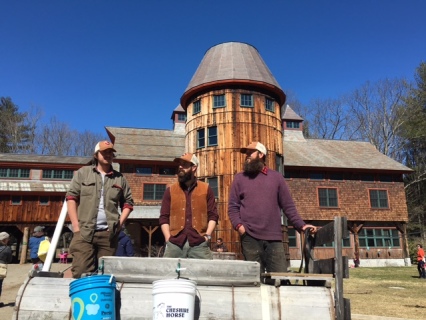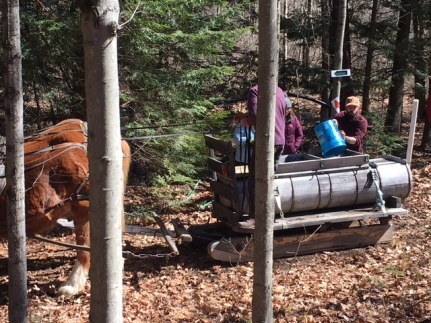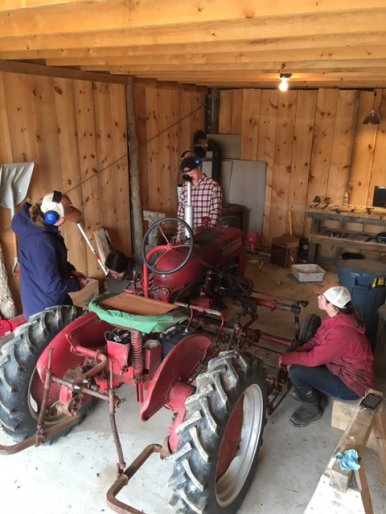With a little return of winter weather this week, Josh B and the adult students have made a final push on our epic pasture and stonewall recovery effort that has been going most of the winter. The ground froze back up a bit so we could drive on the pastures again, we had a couple of inches of snow so large burn-piles were safe to burn, and we charged ahead on the last leg of the 3 Trees Pasture. This pasture, part of the old Rowe family complex that The Farm School purchased a few years ago, sits right between the Sentinel Elm campus and the Maggie’s campus. The pasture is four and half acres, lightly sloping to the east, and it was named for the 3 large spruce trees that stand separately in it. Although the pasture was neglected for years before we took ownership of it, it has responded well to our rotational grazing, and it promises to play a significant part in our beef herd’s grazing rotation into the future. We also uncovered an old hand-dug stone lined well in the pasture this spring, and there is some hope for drawing water from it to supply the beef herd when they’re in the neighborhood. Once the brush at the edges of the pasture has been cleared, we can build high-tensile fences that stay up year round and provide a solid perimeter for the cows.

The Farm School is home to a team of Belgian draft horses named Tom and King, and last weekend Bradley took them to Stonewall Farm, in Keene, NH for a sap collecting competition. Teams of three farmers, one driver and two collectors, navigated a course through the woods pulling an old-style sap tank on wooden runners. The two collectors, carrying five gallon buckets, ran from tree to tree, emptied the contents into their five-gallon buckets, and ran that back to fill the tank on the sled. The teams were timed through the course, and their total gallons collected was measured.

Fifteen teams, from all over New England competed, and there was also an obstacle course for the driver and horses too. The Farm School team ran the course in eleven and a half minutes, collected 154 gallons of sap, and took home first place!
I mentioned last week that we have renewed the poll barn at the Maggie’s Farm complex, and renovated the back end of it to build a cement floored garage area for working on farm trucks, tractors, and other implements that need service. This space has been wired for power and lights, so we can see what we’re doing down there, charge batteries, run power tools, and play loud music. There is a wood stove to heat the space for working, and

to warm up vehicles and other projects that are nicer to work on when they’re not freezing cold. Students insulated the walls, and installed and insulated the ceiling you can see at the top of this picture. Work benches for tools and parts around the edges, jacks for lifting, oil filters and tools, and just about anything else we’ll need for vehicle maintenance fills the space. This garage is our second enclosed heated work space at the Maggie’s Farm complex, ensuring that no matter the weather, we can always keep the work of the farm moving ahead.
The rams have been separated from the ewes in anticipation of the start of lambing season any day now. Several ewes are walking around with super wide bellies, although the clearest way to see if a ewe is getting close to lambing is to check her udder. About seventy percent of lamb and udder development in sheep comes in the last month of a five month pregnancy, and we really see the udder fill up in the last ten days or two weeks before delivery. I go in with the ewes every day now to check udders, and to look for ewes getting close to lambing. I’ll write more next week about ewes in late pregnancy, and our approach to managing that challenging time.